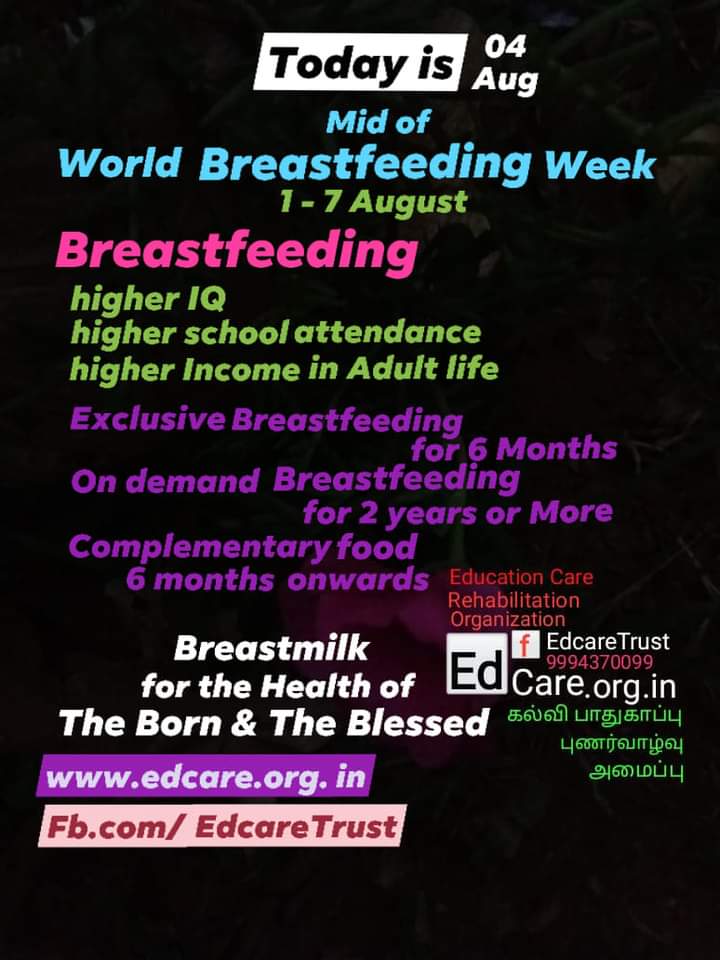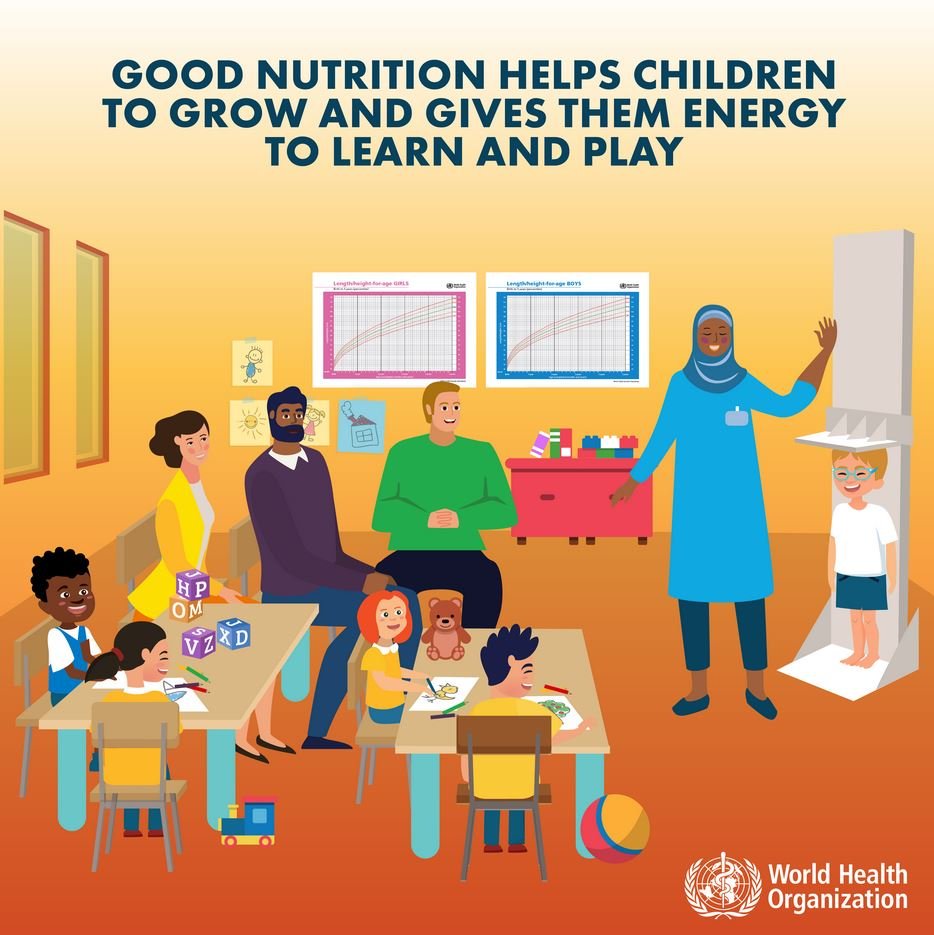Undernutrition is associated with 45% of child deaths.
Globally in 2020, 149 million children under 5 were estimated to be stunted (too short for age), 45 million were estimated to be wasted (too thin for height), and 38.9 million were overweight or obese.
The risk of mortality due to diarrhoea and other infections can increase in infants who are either partially breastfed or not breastfed at all.

On Breastfeeding:
Breastfeeding protects against gastrointestinal infections
Early initiation of breastfeeding, within 1 hour of birth, protects the newborn from acquiring infections and reduces newborn mortality.
The first 2 years of a child’s life are particularly important, as optimal nutrition during this period lowers morbidity and mortality, reduces the risk of chronic disease, and fosters better development overall.
Children and adolescents who were breastfed as babies are less likely to be overweight or obese.
Breastfed children perform better on intelligence tests and have higher school attendance.
Breastfeeding is associated with higher income in adult life.
Breastmilk improves child development and reduces health costs resulting in economic gains for individual families as well as at the national level.

Longer durations of breastfeeding also contributes to the health and well-being of mothers: reducing the risk of ovarian and breast cancer and helps space pregnancies–exclusive breastfeeding of babies under 6 months has a hormonal effect which often induces a lack of menstruation. This is a natural (though not fail-safe) method of birth control known as the Lactation Amenorrhoea.
Breastfeed within one hour of birth.
Promote skin-to-skin contact between mother and baby immediately after birth and initiation of breastfeeding within the first hour of life.
Provide breastfeeding on demand (that is, as often as the child wants, day and night);
Continue frequent, on-demand breastfeeding until 2 years of age or beyond
Practise responsive feeding (for example, feed infants directly and assist older children. Feed slowly and patiently, encourage them to eat but do not force them, talk to the child and maintain eye contact)

Promote skin-to-skin contact between mother and baby immediately after birth and initiation of breastfeeding within the first hour of life. Provide breastfeeding on demand (that is, as often as the child wants, day and night); Continue frequent, on-demand breastfeeding until 2 years of age or beyond Practise responsive feeding (for example, feed infants directly and assist older children. Feed slowly and patiently, encourage them to eat but do not force them, talk to the child and maintain eye contact)
Allow mothers and infants to remain together 24 hours a day Avoid giving babies additional food or drink, even water, unless medically necessary Note that if, complementary foods are not introduced around the age of 6 months, or if they are given inappropriately, an infant’s growth may falter Start complementary food at 6 months with small amounts of food and increase gradually as the child gets older Gradually increase the consistency and variety of complimentary food
Steadily increase the number of times the complimentary food is fed to the child: 2–3 meals per day for infants 6–8 months of age and 3–4 meals per day for infants 9–23 months of age, with 1–2 additional snacks as required Use fortified complementary foods or vitamin-mineral supplements as needed During illness, increase fluid intake including more breast.
